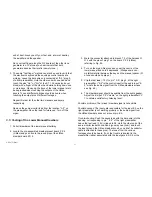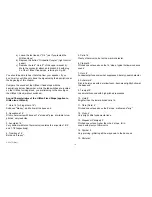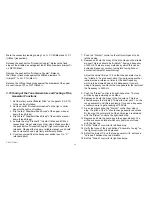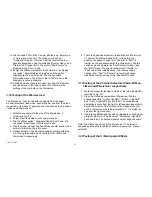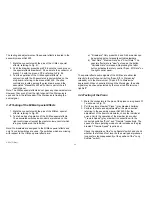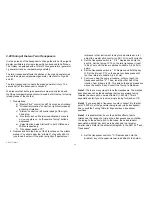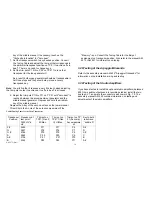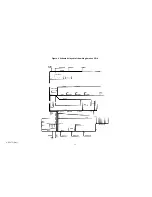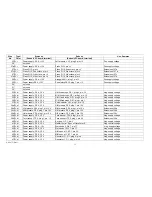
and the transposer, of course, will influence its frequencies.) The
tone generator 1lfeeds the U/Man I voices and the piano section. Its
pitch changes with the ensemble toning. Assume that you have
selected a strong detuning (as is used for the French Accordion). If
you play both the M/Man and the L/Man respectively everything is
fine, since the L/Man is in tune with one of the pitches of the M
/Man. Should you, however, play the U/Man with one hand and the
L/Man with the other hand, the resulting sound will be an earsore
due to the non-related detuning.
3.17 Testing of the Wersivoice I
The Wersivoice I is intended to operate on the audio signals
coming from the M/Ma n (drawbars, fixed stops, special effects),
from tP7;: 1-..'Man (drawbars, fixed stops) and from the pedals
respectively. Its modes of operation are controlled by the
switchbank "Wersivoice I". Also refer to Fig. 65.
1. Mate the connectors with the corresponding pins on the
Wersivoice I, referring to Fig. 82.
2. Select a few fixed stops in both M/Man and L/Man
respectively. Flip the switches " Drawbars/Fixed Stops" down
for both manuals. Flip the switches "Fixed Stops to
Wersivoice" down for both manuals.
3. Play on both manuals (M/Man and L/Man) without any
couplers. The fixed stops should sound with the kind of
vibrato that appears to coma from rotating speakers. When
flipping the switch "Fixed Stops to Wersivoice" up again, the
sound should come "straight" from the right speaker.
4. Set the trim pot P 1 (Output) on the Wersivoice I to the
centre of rotation. Select a "heavy" registration (almost all
fixed stops active) on the M /Man.
5. While holding a full chord o n the middle manual, turn the
trim pot P 2 (Input) on the Wersivoice I clockwise until you
detect some distortion. Turn the trim pot P 2 counter
clockwise for about 15 degrees such that the distortion
disappears.
6. Flip the M/Man switch "Fixed Stops to Wersivoice" back and
forth. You probably notice a volume difference. Adjust the
trim pot P 1 (Output) on the Wersivoice until the volume is
approximately equal in both switch positions.
7. Depress and hold a chord on the middle manual. Flip the
switch "Fast/Chorale " (Wersivoice 1) down. The vibrato
should become slow.
8. Flip the switch "Fast/Chorale" up again. The vibrato speed
should gradually increase until it reaches the fast speed
again.
9. Adjust the trimpot P3 (Fast) of the Wersivoice I to obtain a
vibrato of about 7 Hz. Compare it with your impression of a
tremulant human soprano voice or adjust it to your personal
taste.
10. Set the "Fast/Chorale" switch to " Ch orate' again and adjust
the trimpot P 4 (Slow) to obtain a vibrato speed of
approximately .6 Hz 116 "revolutions" in 10 seconds).
11. Flip the switch "Normal /Heavy" down and all others up. The
vibrato will gain intensity.
12. Flip the switch "Normal/Soft" down and all others up. The
vibrato intensity should be diminished. If you listen carefully
you detect 2 "straight" portions and a "vibrato" portion
respectively on the audio signal
13. Flip both switches "Normal /Heavy" and "Normal/ Soft" down.
A very emphasized vibrato should result. This mode is
inhibited internally at the "Chorale" speed.
Note that 4 intensities are available, namely soft, normal,
heavy, and very heavy.
AM 075 (Part)
24
Summary of Contents for GALAXY
Page 1: ...Master Assembly GALAXY AM 075 AM 075 Part 1 ...
Page 4: ...Figure 1 Layout of the building blocks in the organ top AM 075 Part 4 ...
Page 5: ...Figure 2 Block diagram of the audio distribution and associated DC controls AM 075 Part 5 ...
Page 6: ...AM 075 Part 6 ...
Page 33: ...Figure 4 Schematic layout of the wiring harness GO 4 AM 075 Part 33 ...


